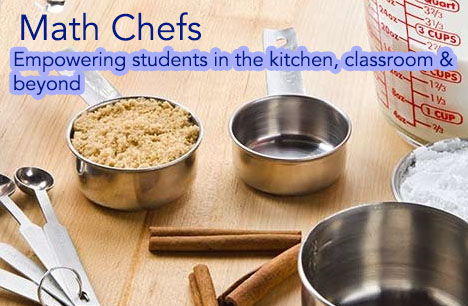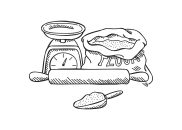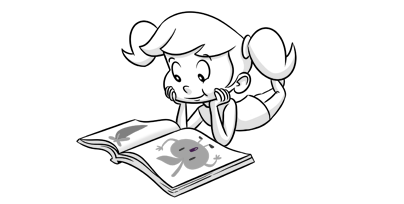Math Chefs: Summary
This is a virtual self-paced program where students learn to connect mathematics and cooking as they focus on mathematical objectives such as measurements, operations, reasoning, comparison/contrast, sequencing, geometry, graphs, processes, relationships, patterns, probability, and other mathematical tools while in the kitchen.
Students are the “STARS” as they focus on math objectives such as measurements, operations, reasoning, comparison/contrast, sequencing, geometry, graphs, processes, relationships, patterns, probability, and other mathematical tools. Lively culinary demonstrations involving the measuring of ingredients, informative worksheets such as crosswords and word searches, which allows students to develop life-skills that will help them make healthier choices for their success as they learn how to apply math skills both in the kitchen and in their daily lives. Multiple classes and grades can be involved at one time.
Duration: 60 minutes
Objectives:
- Measurements and unit conversions are rich with opportunities for math problems. You can develop worksheets and problems in which students need to convert recipes from one measurement to another or even re-scale an entire recipe to adjust for a mistake in measuring.
- For sections that instruct students to READ, you can record yourself reading aloud and send it to students. Direct them to read along with the recording. This is a helpful strategy for differentiating learning that supports all students, especially English Language Learners.
- Some lesson plans are formatted as a fillable PDF so that students can answer the questions and return the document as if it were a worksheet. We recommend testing this functionality with your technology as it varies by device and operating system. If it does not work for you, consider using a google form or having students answer the questions in a new document and submitting their answers to you that way.
Students will:
- Understand temperature, how it’s measured, how it affects everyday life, and its importance in cooking
- Recognize and solve problems with different units of measure, fractions, and weight versus volume
- Estimate budgets, food costs and use grocery lists used in everyday situations
- Q&A session with a chef to identify and expound upon the joys of using math outside of school
- Measure ingredients to complete a recipe using measuring cups, measuring spoons, and ounces while comparing the differences of each.
- Compare fractions in action using concrete models investigate practical life kitchen geometry
- All students will get fun recipes to do at home that allow them to use math when cooking or baking
TEKS:
- 111.2 – Kindergarten, Adopted 2012.
- b.1 – Mathematical process standards. The student uses mathematical processes to acquire and demonstrate mathematical understanding. The student is expected to:
- A – apply mathematics to problems arising in everyday life, society, and the workplace;
- b.6 – Geometry and measurement. The student applies mathematical process standards to analyze attributes of two-dimensional shapes and three-dimensional solids to develop generalizations about their properties. The student is expected to:
- A – identify two-dimensional shapes, including circles, triangles, rectangles, and squares as special rectangles;
- b.7 – Geometry and measurement. The student applies mathematical process standards to directly compare measurable attributes. The student is expected to:
- A – give an example of a measurable attribute of a given object, including length, capacity, and weight; and
- b.1 – Mathematical process standards. The student uses mathematical processes to acquire and demonstrate mathematical understanding. The student is expected to:
- 111.3 – Grade 1, Adopted 2012.
- b.6 – Geometry and measurement. The student applies mathematical process standards to analyze attributes of two-dimensional shapes and three-dimensional solids to develop generalizations about their properties. The student is expected to:
- E – identify three-dimensional solids, including spheres, cones, cylinders, rectangular prisms (including cubes), and triangular prisms, and describe their attributes using formal geometric language;
- H – identify examples and non-examples of halves and fourths.
- b.6 – Geometry and measurement. The student applies mathematical process standards to analyze attributes of two-dimensional shapes and three-dimensional solids to develop generalizations about their properties. The student is expected to:
- 111.4 – Grade 2, Adopted 2012.
- b.3 – Number and operations. The student applies mathematical process standards to recognize and represent fractional units and communicates how they are used to name parts of a whole. The student is expected to:
- A – partition objects into equal parts and name the parts, including halves, fourths, and eighths, using words;
- D – identify examples and non-examples of halves, fourths, and eighths.
- b.3 – Number and operations. The student applies mathematical process standards to recognize and represent fractional units and communicates how they are used to name parts of a whole. The student is expected to:
- 111.5 – Grade 3, Adopted 2012.
- b.7 – Geometry and measurement. The student applies mathematical process standards to select appropriate units, strategies, and tools to solve problems involving customary and metric measurement. The student is expected to:
- A – represent fractions of halves, fourths, and eighths as distances from zero on a number line;
- C – determine the solutions to problems involving addition and subtraction of time intervals in minutes using pictorial models or tools such as a 15-minute event plus a 30-minute event equals 45 minutes;
- D – determine when it is appropriate to use measurements of liquid volume (capacity) or weight; and
- E – determine the liquid volume (capacity) or weight using appropriate units and tools.
- b.7 – Geometry and measurement. The student applies mathematical process standards to select appropriate units, strategies, and tools to solve problems involving customary and metric measurement. The student is expected to:
- 111.6 – Grade 4, Adopted 2012.
- b.3 – Number and operations. The student applies mathematical process standards to represent and generate fractions to solve problems. The student is expected to:
- F – evaluate the reasonableness of sums and differences of fractions using benchmark fractions 0, 1/4, 1/2, 3/4, and 1, referring to the same whole; and
- b.8 – Geometry and measurement. The student applies mathematical process standards to select appropriate customary and metric units, strategies, and tools to solve problems involving measurement. The student is expected to:
- A – identify relative sizes of measurement units within the customary and metric systems;
- C – solve problems that deal with measurements of length, intervals of time, liquid volumes, mass, and money using addition, subtraction, multiplication, or division as appropriate.
- b.3 – Number and operations. The student applies mathematical process standards to represent and generate fractions to solve problems. The student is expected to:
- 111.7 – Grade 5, Adopted 2012.
- b.1 – Mathematical process standards. The student uses mathematical processes to acquire and demonstrate mathematical understanding. The student is expected to:
- A – apply mathematics to problems arising in everyday life, society, and the workplace;
- B – use a problem-solving model that incorporates analyzing given information, formulating a plan or strategy, determining a solution, justifying the solution, and evaluating the problem-solving process and the reasonableness of the solution;
- b.1 – Mathematical process standards. The student uses mathematical processes to acquire and demonstrate mathematical understanding. The student is expected to:
- 111.26 – Grade 6, Adopted 2012.
- b.5 – Proportionality. The student applies mathematical process standards to solve problems involving proportional relationships. The student is expected to:
- A – represent mathematical and real-world problems involving ratios and rates using scale factors, tables, graphs, and proportions;
- C – use equivalent fractions, decimals, and percents to show equal parts of the same whole.
- b.5 – Proportionality. The student applies mathematical process standards to solve problems involving proportional relationships. The student is expected to:
Login here, redirect to allow the user to select a grade level: K-1; 2 and up
K-1 will take students to simple program elements (videos, coloring pages, puzzle, etc)
2 and up will take students to program elements (perhaps videos, google classroom items, or online PDFs which students can print, e-mail their teacher. ** A PDF can have links and have things for the student to fill out to print/download to e-mail to the teacher.
We need to design “forward” and “back” buttons




